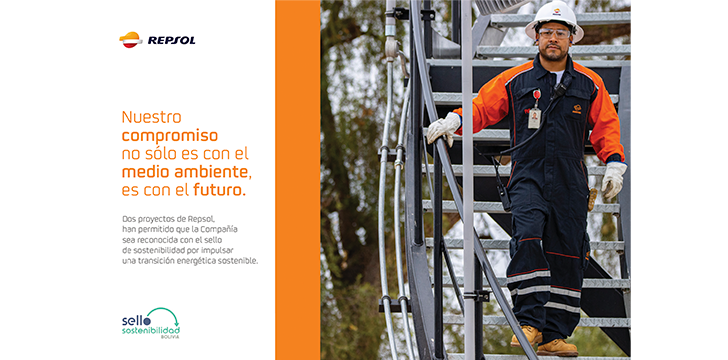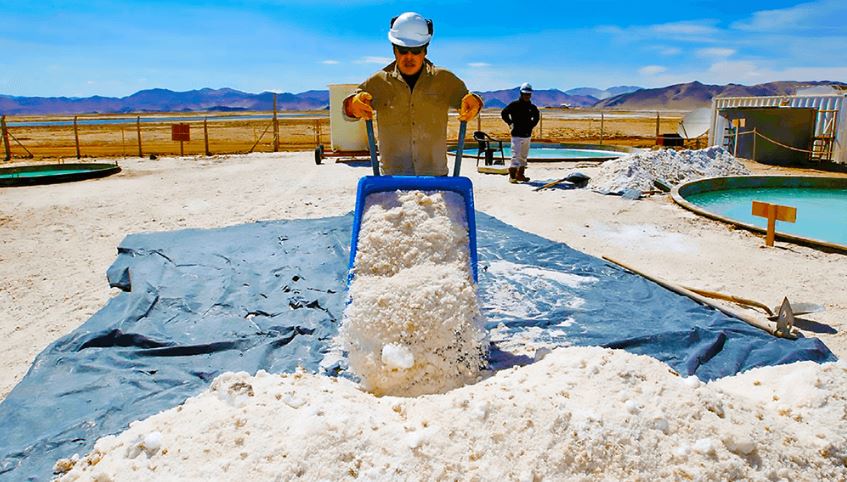The Government is in a decisive stage of choosing between six foreign companies that will be in charge of exploiting and industrializing lithium, while some analysts consider that the country is already out of time to take advantage of the benefits that this resource could bring.
ISSUE 108 | 2022
Elizabeth Riva Álvarez
Bolivia is undertaking an accelerated selection process looking for companies that will compete to take over the exploitation and industrialization of lithium. Six international companies passed the technical qualification process, which lasted almost a year, and they are currently waiting for the selection process conducted by the Government of Luis Arce and the state owned company Yacimientos de Litio Bolivianos (YLB). As a matter of fact, it was anticipated that a potential agreement could be signed with more than one company.
The final decision, which could be announced this month, is delayed because the negotiations with the chosen company or companies, must be based on the acceptance of the so-called “sovereign conditions” imposed by the government in order to exploit lithium. Bolivia, which concentrates one of the world’s main lithium reservoirs, is a country that has been falling behind in the production of this mineral, which set record high prices this year.
“The next step is meeting with the companies, so we can present our sovereign conditions regarding lithium exploitation. As a State, we must protect this natural resource and make sure that the greatest benefits will be for Bolivians”, said the YLB director, Carlos Ramos, at a press conference.
Out of the six companies that reached the final stage, four are from China: Contemporary Amperex Technology in association with China Molybdenum Company, Fusion Enertech, Citic Guoan Group and TBEA Group; there is also a Russian company Uranium One and a US company Lilac Solutions. Two companies were eliminated for submitting their proposals after the due date, EnergyX from the US and Tecpetrol from Argentina.

MEMORANDUM OF UNDERSTANDING
After being eliminated in this process, Argentina, which already has important milestones in the exploitation and industrialization of its lithium, signed with Bolivia, on July 1st , a Memorandum of Understanding to transfer scientific and technological knowledge , thus providing guidance in managing this resource.
The six companies that are in the race to be awarded as the official producers of Bolivian lithium, achieved a good rating. “Most achieved a recovery rate of over 80% and in some cases, up to 90%,” said Ramos.
Among the indicators that were evaluated in the pilot tests, there is the mineral recovery rate, water usage, purity, time, energy and flexibility.
A study presented in 2019 by YLB states that “Bolivia has 21 million metric tons of geological reserves of lithium.” Michael Biste, geologist and former honorary consul of Germany in Santa Cruz de la Sierra, clarifies that the aforementioned figure does not represent reserves but rather lithium resources, a detail that he considers important to clarify. Most of these resources are in Uyuni’s salt flats, located in Potosí and, to a lesser extent, in the Pastos Grandes reservoir, also located in Potosí, as well as in Coipasa, Oruro.

DIRECT EXTRACTION
The Government determined and defended that the application of direct lithium extraction technology (DLE) will accelerate the industrialization process of this resource thus achieving the production of derivatives on an industrial scale in three years.
“This will allow us to make a qualitative leap reaching by the end of 2024 or by the beginning of 2025 an industrial-scale production of lithium hydroxide and battery cathodes,” said the Deputy Minister of High Energy Technologies, Álvaro Arnez, quoted in a press release of the Ministry of Hydrocarbons and Energy.

The demand for lithium has skyrocketed mainly in the last decade due to the increase of electric vehicles manufacturing…”
The authority highlighted that it was decided to analyze the use of DLE technology to accelerate the industrialization of lithium, since it allows to reduce the time for the separation of the element and other metals found in brines, as well as to reduce expenses and also the environmental impact.
STRATEGIC PROJECT
In April 2021 the announcement for the project was published to attract companies interested in testing their DLE technology in the brines of the Bolivian salt flats. 20 companies applied and 6 managed to pass the technical tests.
The Minister of Hydrocarbons and Energy, Franklin Molina stated that “it is a strategic project for the country”, that will foster progress towards the accomplishment of deadlines established in the government plan “to complete the entire lithium industrialization process”.
According to the minister, a quantification of the lithium reserves in Oruro is underway and in his opinion, the current national figure “could easily double”, because the first studies are encouraging.
Currently Bolivia has plants for the industrialization of potassium chloride salts; a lithium carbonate pilot center; and, another one with greater capacity is under construction in which it is expected to produce some 15,000 tons.

DELAYED
The director of the consulting firm ILIMarkets, Daniel Jiménez, considers that Bolivia and Chile are already out of the decade of the lithium “boom”, because it has been shown that projects of this type require between 10 and 15 years to be developed. “So, we are late or about to get to the queue in this party that can last 10 or 15 more years. Argentina is doing very well, it will be able to make the most of its resources with the multiple and significant investments made so far, encouraged by its friendly legislation”, said the Chilean expert in a forum promoted by the newspaper La Razón, in April.
To this reality, according to the consultant, it must be considered that after this decade, the price of primary lithium will suffer a negative impact because the market will have the option of recycled lithium.
“During the decade of 2020, the industry must increase the production of lithium from primary sources (brine or minerals) sevenfold to respond to demand. Starting in 2030, this growth rate will drop considerably due to the supply of secondary lithium, a product of recycling,” he said.
Currently Australia is the main producer of lithium (80%), followed by China with 10%. In Latin America, the countries with the highest participation are Brazil, Argentina and Chile.
The demand for lithium has skyrocketed mainly in the last decade due to the increase of electric vehicles manufacturing and lithium batteries required for mobile phones, laptops and large processors.


